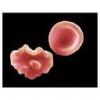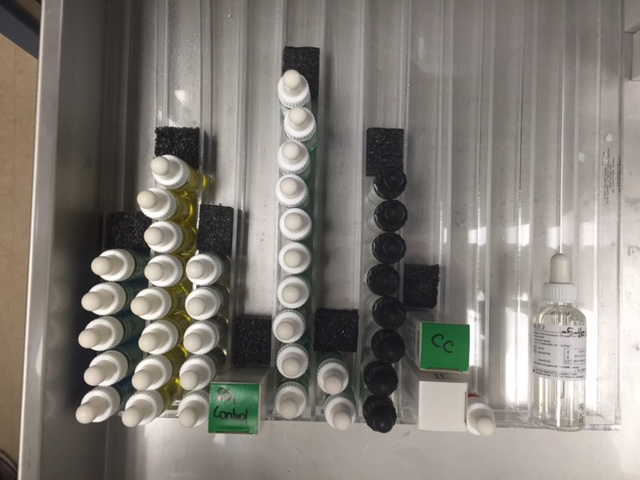tbostock
Members - Bounced Email
-
Joined
-
Last visited
-
Country
United States
Everything posted by tbostock
- Storage of crossmatched vs non-crossmatched units
-
Antigen screening in house vs. ordering from Blood Supplier
Our criteria lately seems to be staffing. Sometimes it would probably be more cost effective to screen units, but if it takes a tech a couple hours, then other work waits. So we have to balance that. Once a week, we screen about 10 type O units on our Tango for the Rh/K antigens. So we always have some K and E neg units around to grab.
-
Transport of Blood Products
Blood in coolers is considered storage, not transport, so you must maintain the temp between 1 and 6°C. There are no regs that I am aware of that prohibit you from moving the cooler around.
- Blood Bank refrigerators and freezers
-
SBB Exam
Also, sign up for the Transfusion Medicine Question of the Day. They vary from beginner to advanced, but you WILL learn something every day. http://transfusionnews.com/subscribe/
-
Storage of non-blood products in BB fridge
Yes, I'm doing the same with our fecal transplant samples.
- Blood Bank refrigerators and freezers
-
Blood bank Samples
6 ml, packed, and yes. I am NOT a fan of separating plasma, I think it's a cause of error.
-
Sickle Cell Transfusion Patients
Rh and K matched; more if possible (Jka, Fya) and HgbS negative.
-
SBB Exam
I used the AABB Annual Meeting SBB review notes and the Transfusion Medicine Self-Assessment and Review book.
-
Transfusion of patients on Darzalex
We've only had one so far. We sent his specimen out for a antigen genotype so we can give him Rh/K matched blood at least. We're looking at bringing in the DTT procedure if this treatment should be more common.
-
Gel antibody panel and tube antibody panels
Nope. I think it's a great idea to have different methods and different manufacturers.
- Patient Re-types
-
Previously identified antibodies
On subsequent workups, we no longer "rule-in" the antibody. We just pick selected cells to rule out anything else, and our same "ruling-out" rules apply.
-
Patient Re-types
If a patient has a history on file that counts as the "first type". If no history, we obtain a specimen drawn by the Lab (do not allow the same dept who collected the first to also collect the second), CBCs are OK. We order a no charge "confirmation blood type" test to be able to result it in our LIS. If unable to get a second specimen, the patient gets type O until we can. Cords: we don't get retypes as all of our neonates receive O Neg red cells. Pre-ops: PST sample is the first sample, day of OR is the second. Trauma: unless we happen to have a history and have time to complete the Type and Screen, they get type O uncrossmatched.
-
Storage of non-blood products in BB fridge
Personally I would not want urine in the same refrigerator as blood products, just for infection control reasons. And suggest not to have reagents and blood in the same as they do have different storage requirements as listed above.
- Potentiator QC
- Central temperature monitoring system
-
Reagent fridge holder
We used some foam packing material and cut it into squares and they fit snugly in the channels of the rack. #boom
-
Blood product issue time
Correct; it's 4 hours from the time it leaves storage (refrig or cooler), NOT when they start it. And there is no longer a "30 minute rule"; they can leave it sitting on the counter for 3 hours and transfuse it in 1 hour if they wanted to (not ideal of course...).
-
KB stain
Yeah, I know. It's a problem. I've brought this up multiple times. It's one of those things that nobody cares about until it happens and then they'll be yelling. Usually for trauma they just want confirmation of a bleed because that is the 1st indicator that the baby is in trouble; they're not worried about the RhIg issue just yet.
-
KB stain
If our fetal bleed screen is positive, we send out to a reference lab for Flow Cytometry for fetal erythrocytes. We stopped doing KB years ago. Usually done in 72 hours.
-
Transfusion reaction culture
Same here
-
Tissue Bank in OR
At our place the Medical Director of the Lab/Blood Bank is also the Medical Director of tissues. And in NY State, they except lab oversight. It very difficult to have oversight of something that is completely out of your area and out of your control. It's not a fun process; I would also suggest to "say no and run" but if your hospital is cited, you can run but you might not be able to hide for too long.
-
Ruling out Kell with Heterozygous cells?
amym1586: you know you've "made it" on pathlabtalk when you get schooled by Malcolm on the proper nomenclature. LOL.


